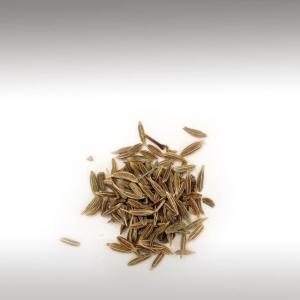
CARROT SEED ESSENTIAL OIL (DAUCUS CAROTA) - ESSENTIAL OILS

BASE / GENERAL DATA
Information submited: April 14, 2015 By: OperaDreamhouse
Botanical Name: Daucus carota
Common Method of Extraction: Steam distillation
Part Typically Used: Dried seeds
Color: Yellow, amber-coloured to pale orange-brown
Consistency: Thin
Perfumery Note: Base
Strength of Initial Aroma: Slightly sweet, woody, dry and earthy aroma.
Daucus carota, whose common names include wild carrot, bird's nest, bishop's lace. Carrot seed oil is extracted from Daucus carota of the Apiaceae family and is also known as wild carrot and Queen Anne's lace, native to temperate regions of Europe, southwest Asia and naturalized to North America and Australia.
The wild carrot is a herbaceous, somewhat variable biennial plant that grows between 30 and 60 centimetres tall, roughly hairy, with a stiff solid stem. The leaves are tri-pinnate, finely divided and lacy, overall triangular in shape. The flowers are small and dull white, clustered in flat, dense umbels.
The wild carrot seeds collecting in July - August, when the umbels have closed upon the seeds and the seeds have ripened and dried inside their shelter.
Collection is time consuming, since the plants are spread, ripen individually one by one and the heads are cut one by one. It takes many visits to the Daucus populations to complete collection for a distillation. Steam distillation the heads for at least 6 hours, and the oil has a deep, lasting sweet smell with flowery undertones.
As the seeds develop, the umbel curls up at the edges, becomes more congested, and develops a concave surface. The fruits are oval and flattened, with short styles and hooked spines. The dried umbels detach from the plant, becoming tumbleweeds.
The name is derived from the Greek "Carotos" and it had great medicinal value in ancient times, especially for its carminative properties. Daucus is from the Greek word (THAV-kon) meaning carrot parsnip and other similar food plants. Carota is from the Greek Καρότον ka-ROW-ton, also meaning carrot is from the Indo European word Ker, meaning head or horn. Pusillus is Latin for tiny or puny.
Chemical structure:
The main constituent of this oil is carotol. It is one of the primary components found in carrot seed oil comprising approximately 40% of this essential oil. Additionally, studies have shown that carotol may be involved in allelopathic interactions expressing activity as an antifungal, herbicidal and insecticidal agent.
essential oil very stable, should be good for two years or more, although some reduction in aroma intensity will be evident before that time.
The main chemical constituents of carrot seed oil include a-pinene, camphene, b-pinene, sabinene, myrcene, y-terpinene, limonene, b-bisabolene, geranyl acetate.
Common Method of Extraction: Steam distillation
Part Typically Used: Dried seeds
Color: Yellow, amber-coloured to pale orange-brown
Consistency: Thin
Perfumery Note: Base
Strength of Initial Aroma: Slightly sweet, woody, dry and earthy aroma.
Daucus carota, whose common names include wild carrot, bird's nest, bishop's lace. Carrot seed oil is extracted from Daucus carota of the Apiaceae family and is also known as wild carrot and Queen Anne's lace, native to temperate regions of Europe, southwest Asia and naturalized to North America and Australia.
The wild carrot is a herbaceous, somewhat variable biennial plant that grows between 30 and 60 centimetres tall, roughly hairy, with a stiff solid stem. The leaves are tri-pinnate, finely divided and lacy, overall triangular in shape. The flowers are small and dull white, clustered in flat, dense umbels.
The wild carrot seeds collecting in July - August, when the umbels have closed upon the seeds and the seeds have ripened and dried inside their shelter.
Collection is time consuming, since the plants are spread, ripen individually one by one and the heads are cut one by one. It takes many visits to the Daucus populations to complete collection for a distillation. Steam distillation the heads for at least 6 hours, and the oil has a deep, lasting sweet smell with flowery undertones.
As the seeds develop, the umbel curls up at the edges, becomes more congested, and develops a concave surface. The fruits are oval and flattened, with short styles and hooked spines. The dried umbels detach from the plant, becoming tumbleweeds.
The name is derived from the Greek "Carotos" and it had great medicinal value in ancient times, especially for its carminative properties. Daucus is from the Greek word (THAV-kon) meaning carrot parsnip and other similar food plants. Carota is from the Greek Καρότον ka-ROW-ton, also meaning carrot is from the Indo European word Ker, meaning head or horn. Pusillus is Latin for tiny or puny.
Chemical structure:
The main constituent of this oil is carotol. It is one of the primary components found in carrot seed oil comprising approximately 40% of this essential oil. Additionally, studies have shown that carotol may be involved in allelopathic interactions expressing activity as an antifungal, herbicidal and insecticidal agent.
essential oil very stable, should be good for two years or more, although some reduction in aroma intensity will be evident before that time.
The main chemical constituents of carrot seed oil include a-pinene, camphene, b-pinene, sabinene, myrcene, y-terpinene, limonene, b-bisabolene, geranyl acetate.

SPIRITUAL PRACTISES DATA

MEDICINE / HEALTH DATA

BEAUTY / COSMETICS DATA

FOOD / COOKING DATA
COMMENTS
No comments.


